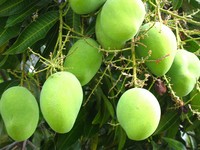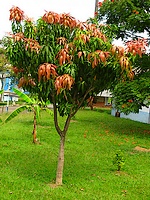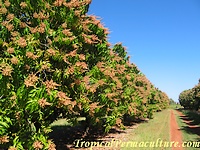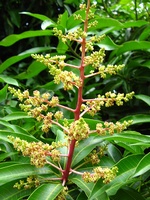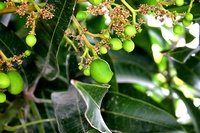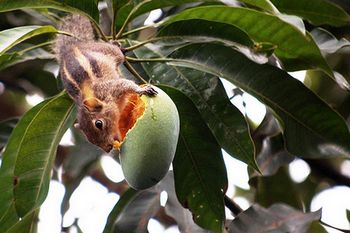Surely everyone has heard by now that the recommended daily intake of fruit and vegetables is 5 portions. Government health departments and agencies all over the world have been expounding this for a number of years now, even more so now when faced with a growing nation of unhealthy and in many cases obese and unfit people.
Surely everyone has heard by now that the recommended daily intake of fruit and vegetables is 5 portions. Government health departments and agencies all over the world have been expounding this for a number of years now, even more so now when faced with a growing nation of unhealthy and in many cases obese and unfit people.
What's so good about fruit and vegetables you cry? Well, nowadays, due to the results of extensive research, we cannot get away from the fact that they are extremely good for us, and that eating a diet rich in fruit and vegetables can lower the risk of and prevent a number of serious illnesses and health problems, such as cancer, high blood pressure and cardiovascular disease. We mustn't forget either that the majority of fruit and vegetables contain no unhealthy fats or cholesterol and are very low in calories, all of which will help us to maintain a fantastic figure and prevent us from piling on the pounds.
Pressure is put on our hospitals and governments as many of today's illnesses are related to diet and could be avoided if people looked after themselves and ate more sensibly and healthily. Admittedly, a huge amount of money could be saved and thus spent in other areas of the national healthcare system where it was needed.
Statistics have shown that between 35 - 50% of cancer cases are related to diet, which is an astonishing amount, considering that all of these cases could have been averted.
Fruit and vegetables are packed full of goodness and often contain a number of essential vitamins and minerals that cannot be found in other types of foods or they may contain higher levels of these nutrients than other foods.
They are made up of water, melons up to 94%, which is also essential for the body and their skin and seeds contain plenty of fibre, which our body needs to help cleanse and rid itself of waste and toxins. Fibre is needed to keep bowel movements regular, lower cholesterol, prevent constipation, bowel cancer and other illnesses of the bowel and intestine such as diverticulosis.
Different coloured fruits and vegetables contain different minerals, nutrients and antioxidants and therefore it is recommended that we consume a wide variety of fruit and vegetables in order to receive the benefits from the various types.
For example, dark green leafy vegetables such as watercress, cabbage or spinach contain certain carotenoids that protect, delay and may prevent the onset of degenerative age-related eye diseases such as cataracts or macular degeneration.
They are also rich in vitamins C and E, which are both very powerful antioxidants. This means that eating dark green vegetables daily could help to protect the body from developing cancerous cells and from suffering heart disease.
Red, orange and yellow coloured fruits and vegetables such as melon, tomatoes, carrots and apricots contain lots of vitamins A, C and E, which all help to fight certain types of cancer and act by neutralising free radicals in the body.
As well as containing large amounts of vitamins A, C and E, fruits and vegetables are also rich in vitamins B and K plus minerals such as potassium, calcium, phosphorous, manganese and iron.
Surely everyone has heard by now that the recommended daily intake of fruit and vegetables is 5 portions. Government health departments and agencies all over the world have been expounding this for a number of years now, even more so now when faced with a growing nation of unhealthy and in many cases obese and unfit people.
What's so good about fruit and vegetables you cry? Well, nowadays, due to the results of extensive research, we cannot get away from the fact that they are extremely good for us, and that eating a diet rich in fruit and vegetables can lower the risk of and prevent a number of serious illnesses and health problems, such as cancer, high blood pressure and cardiovascular disease. We mustn't forget either that the majority of fruit and vegetables contain no unhealthy fats or cholesterol and are very low in calories, all of which will help us to maintain a fantastic figure and prevent us from piling on the pounds.
Pressure is put on our hospitals and governments as many of today's illnesses are related to diet and could be avoided if people looked after themselves and ate more sensibly and healthily. Admittedly, a huge amount of money could be saved and thus spent in other areas of the national healthcare system where it was needed.
Statistics have shown that between 35 - 50% of cancer cases are related to diet, which is an astonishing amount, considering that all of these cases could have been averted.
Fruit and vegetables are packed full of goodness and often contain a number of essential vitamins and minerals that cannot be found in other types of foods or they may contain higher levels of these nutrients than other foods.
They are made up of water, melons up to 94%, which is also essential for the body and their skin and seeds contain plenty of fibre, which our body needs to help cleanse and rid itself of waste and toxins. Fibre is needed to keep bowel movements regular, lower cholesterol, prevent constipation, bowel cancer and other illnesses of the bowel and intestine such as diverticulosis.
Different coloured fruits and vegetables contain different minerals, nutrients and antioxidants and therefore it is recommended that we consume a wide variety of fruit and vegetables in order to receive the benefits from the various types.
For example, dark green leafy vegetables such as watercress, cabbage or spinach contain certain carotenoids that protect, delay and may prevent the onset of degenerative age-related eye diseases such as cataracts or macular degeneration.
They are also rich in vitamins C and E, which are both very powerful antioxidants. This means that eating dark green vegetables daily could help to protect the body from developing cancerous cells and from suffering heart disease.
Red, orange and yellow coloured fruits and vegetables such as melon, tomatoes, carrots and apricots contain lots of vitamins A, C and E, which all help to fight certain types of cancer and act by neutralising free radicals in the body.
As well as containing large amounts of vitamins A, C and E, fruits and vegetables are also rich in vitamins B and K plus minerals such as potassium, calcium, phosphorous, manganese and iron.








